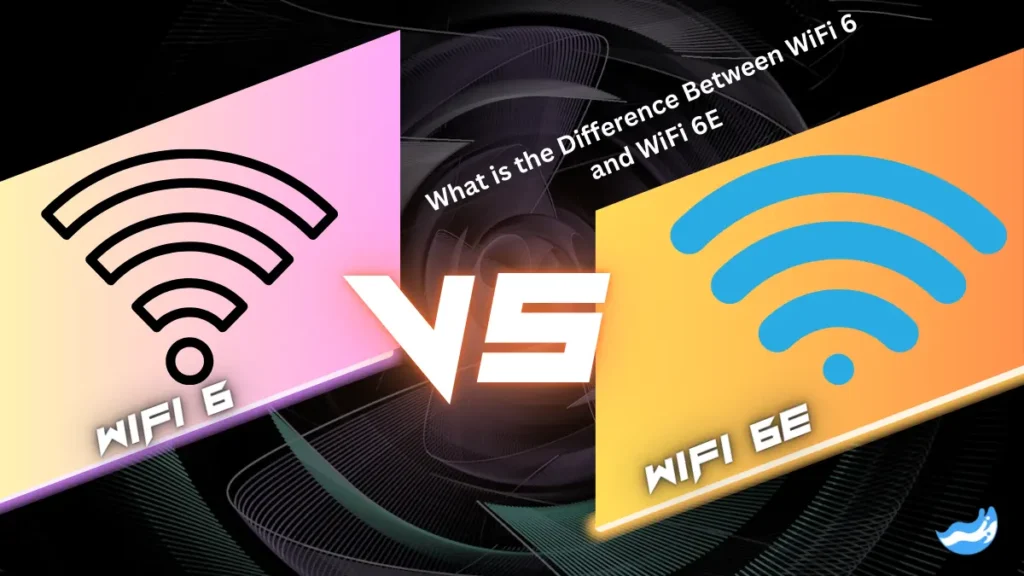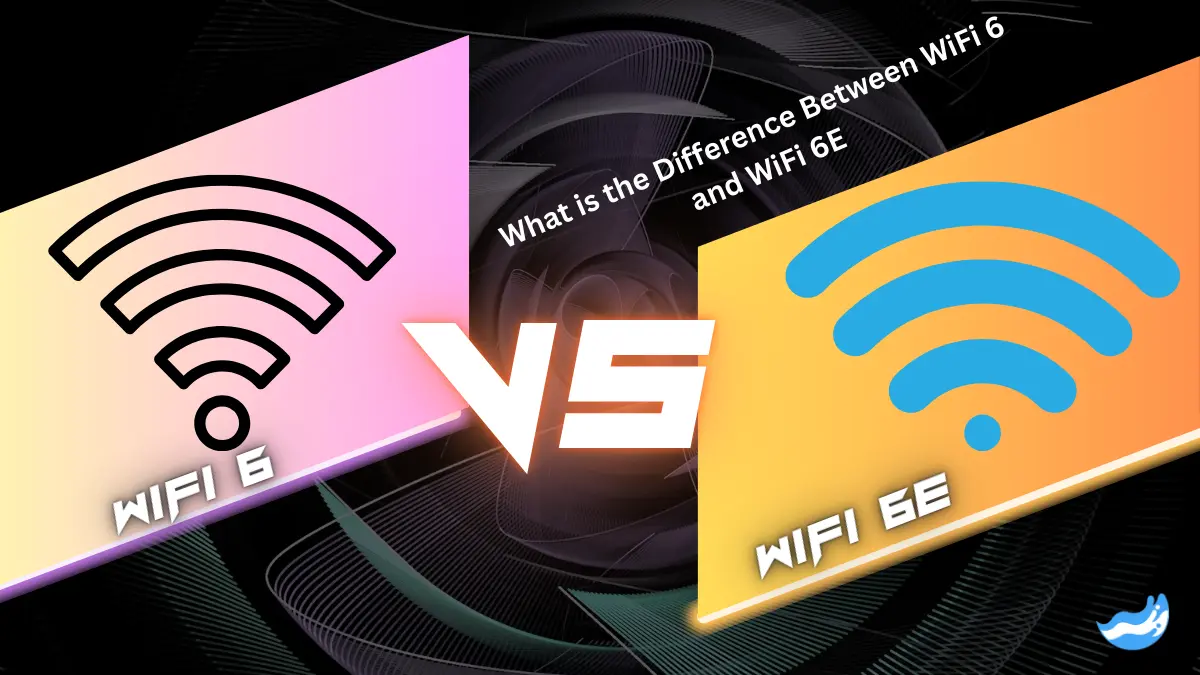Discover the key differences between WiFi 6 and WiFi 6E, including speed, performance, and compatibility. Learn which WiFi generation is right for your home or business and future-proof your network with expert insights.
Introduction
WiFi has become a crucial part of our daily lives, connecting us to the internet, smart devices, and each other. Whether at home, work, or public places, WiFi keeps us online. With each new generation of WiFi, we see improvements in speed, connectivity, and overall performance. But as WiFi evolves, it can be challenging to keep up with the latest technology. This article will explore the differences between WiFi 6 and WiFi 6E, two of the most advanced WiFi generations available today.
Understanding WiFi Generations
WiFi technology has come a long way since its inception. Initially, it started with basic wireless connectivity, which has since evolved into highly sophisticated networks. WiFi generations are identified by numbers, making it easier to understand the progression. WiFi 1 was the beginning, followed by WiFi 2, 3, 4, 5, and now WiFi 6 and WiFi 6E. Each generation has brought significant improvements in speed, reliability, and efficiency.
What is WiFi 6?
WiFi 6, also known as 802.11ax, was released in 2019. It is designed to improve the efficiency of your wireless network, particularly in crowded environments where many devices are connected simultaneously.
Key Features of WiFi 6
WiFi 6 comes with several new features that set it apart from previous generations:
Higher Data Rates: WiFi 6 offers faster speeds, allowing quicker downloads and smoother streaming.
Increased Capacity: It can handle more devices on the same network without a loss in performance.
Improved Battery Life: WiFi 6 uses Target Wake Time (TWT) to schedule check-ins with devices, helping to conserve battery life.
Benefits of WiFi 6 for Users
For the average user, WiFi 6 means better performance in homes with multiple devices. Whether you’re streaming movies, playing online games, or hosting video calls, WiFi 6 provides a more stable and faster connection.
What is WiFi 6E?
WiFi 6E is an extension of WiFi 6, introduced in 2020. The “E” in WiFi 6E stands for “Extended,” and it adds access to the 6 GHz band, previously unavailable for WiFi use.
Key Features of WiFi 6E
WiFi 6E builds on the foundation of WiFi 6, with these additional features:
Access to 6 GHz Band: WiFi 6E opens up a new frequency band, offering more channels and reducing congestion.
Lower Latency: With more bandwidth available, WiFi 6E provides faster response times, making it ideal for gaming and real-time applications.
Benefits of WiFi 6E for Users
WiFi 6E is especially beneficial in areas with many overlapping networks. If you live in an apartment building or a densely populated area, WiFi 6E can offer a clearer, faster connection by using the new 6 GHz band.
Main Differences Between WiFi 6 and WiFi 6E
Frequency Bands
One of the primary differences between WiFi 6 and WiFi 6E is the frequency bands they operate on. WiFi 6 uses the 2.4 GHz and 5 GHz bands, while WiFi 6E introduces the 6 GHz band.
2.4 GHz Band: Offers longer range but lower speeds, ideal for basic internet browsing and IoT devices.
5 GHz Band: Provides faster speeds but has a shorter range, suitable for HD streaming and online gaming.
6 GHz Band: Available only with WiFi 6E, this band offers even faster speeds and less interference, perfect for high-demand applications like VR and AR.
Speed and Performance
WiFi 6E can provide faster speeds and lower latency due to the additional 6 GHz band. This means you can enjoy more reliable performance, especially in environments with multiple users and devices.
Device Compatibility
Not all devices are compatible with WiFi 6E. While WiFi 6 devices can connect to both 2.4 GHz and 5 GHz bands, WiFi 6E devices are required to access the 6 GHz band. This means that to take full advantage of WiFi 6E, you’ll need devices that support it.
Frequency Bands Explained
Understanding the 2.4 GHz Band
The 2.4 GHz band is the oldest frequency band used by WiFi. It provides a longer range but offers lower speeds compared to the 5 GHz and 6 GHz bands. This band is often crowded because many devices, including older WiFi networks, Bluetooth, and even microwaves, operate on it.
Understanding the 5 GHz Band
The 5 GHz band offers faster speeds and is less crowded than the 2.4 GHz band. However, it has a shorter range, making it better suited for smaller spaces or areas where speed is more important than coverage.
Introduction to the 6 GHz Band
The 6 GHz band is the latest addition to WiFi technology, made possible with WiFi 6E. It offers more channels, faster speeds, and significantly less interference, making it ideal for modern, high-demand applications like streaming, gaming, and smart home devices.
WiFi 6: In-Depth Look
WiFi 6 is all about improving efficiency and performance. It introduces several technologies that help achieve this:
Speed and Efficiency Improvements
WiFi 6 delivers faster data rates and more efficient data transfer, thanks to technologies like Orthogonal Frequency Division Multiple Access (OFDMA) and Multi-User MIMO (MU-MIMO). These technologies allow multiple devices to communicate with the router simultaneously, reducing wait times and improving overall network speed.
MU-MIMO and OFDMA Technologies
MU-MIMO: Allows multiple users to send and receive data at the same time without causing delays.
OFDMA: Divides a WiFi channel into smaller sub-channels, enabling the router to communicate with more devices at once.
Enhanced Battery Life for Devices
With Target Wake Time (TWT), WiFi 6 can schedule when devices wake up to send or receive data, reducing unnecessary battery drain. This is particularly beneficial for devices like smartphones and tablets.
WiFi 6E: In-Depth Look
WiFi 6E takes all the advantages of WiFi 6 and amplifies them by adding access to the 6 GHz band.
The Impact of the 6 GHz Band
The 6 GHz band is much wider than the 5 GHz band, providing more channels and less interference. This makes it ideal for applications that require high bandwidth, like video conferencing, virtual reality (VR), and augmented reality (AR).
Less Interference and More Channels
With more channels available, WiFi 6E reduces the likelihood of interference from neighbouring networks. This leads to a more stable and faster connection, especially in crowded areas.
Future-Proofing Your Network
As more devices start to support the 6 GHz band, WiFi 6E will become increasingly relevant. Investing in WiFi 6E now can help ensure that your network remains fast and reliable as technology continues to evolve.

Compatibility and Availability
Device Compatibility with WiFi 6
Most new devices, including smartphones, laptops, and smart home devices, are compatible with WiFi 6. However, to take full advantage of its features, you need a WiFi 6-compatible router.
Device Compatibility with WiFi 6E
WiFi 6E is still relatively new, so not all devices support it yet. However, manufacturers are beginning to release WiFi 6E-compatible devices, including high-end smartphones, laptops, and routers.
Availability of WiFi 6 and WiFi 6E Routers and Devices
WiFi 6 routers are widely available, with a range of options to suit different budgets. WiFi 6E routers are also becoming more common, though they tend to be on the higher end of the price spectrum.
Use Cases: When to Choose WiFi 6
Ideal Scenarios for WiFi 6 Usage
WiFi 6 is ideal for households with multiple devices, including smartphones, tablets, smart TVs, and IoT devices. If you live in a moderately crowded area and need reliable, fast internet, WiFi 6 is a solid choice.
Who Benefits Most from WiFi 6?
Families, gamers, and anyone who streams content regularly will benefit from WiFi 6. It provides the speed and capacity needed for modern digital lifestyles.
Use Cases: When to Choose WiFi 6E
Ideal Scenarios for WiFi 6E Usage
WiFi 6E is best for tech enthusiasts and professionals who require the latest technology. If you live in a densely populated area where many networks overlap, WiFi 6E can offer a clearer, faster connection.
Who Benefits Most from WiFi 6E?
Early adopters, gamers, and professionals who work with bandwidth-intensive applications like video editing or VR will find WiFi 6E especially beneficial.
Future of WiFi Technology
What’s Next After WiFi 6E?
The next generation of WiFi, likely WiFi 7, is already in development. It promises even faster speeds, lower latency, and further improvements in network efficiency.
Predictions for Future WiFi Generations
Future WiFi generations will likely focus on integrating with 5G networks, improving smart home connectivity, and supporting new applications like AI-driven devices and IoT innovations.
Choosing the Right WiFi for Your Needs
Factors to Consider When Choosing Between WiFi 6 and WiFi 6E
Consider your current and future needs when choosing between WiFi 6 and WiFi 6E. Think about the number of devices you have, your internet usage patterns, and whether you plan to upgrade your devices soon.
Budget Considerations
WiFi 6 routers are generally more affordable, while WiFi 6E routers are on the pricier side. Weigh the cost against the benefits to determine which is the best investment for you.
Upgradability and Future-Proofing
If you’re looking to future-proof your network, WiFi 6E might be the better choice. However, if you’re on a budget, WiFi 6 is still an excellent option that will serve you well for years to come.
Common Misconceptions About WiFi 6 and WiFi 6E
Addressing Myths and Misunderstandings
One common misconception is that WiFi 6E is just a marketing gimmick. In reality, WiFi 6E offers tangible benefits, especially in congested areas. Another myth is that you need WiFi 6E if you already have WiFi 6. While WiFi 6E is an upgrade, WiFi 6 still offers excellent performance for most users.
Clarifying Technical Jargon
The terms used in WiFi technology, like MU-MIMO and OFDMA, can be confusing. These technologies are designed to improve network efficiency and performance, making your internet experience smoother and faster.
Conclusion
WiFi 6 and WiFi 6E represent the latest advancements in wireless technology. While both offer significant improvements over previous generations, WiFi 6E takes things a step further with the introduction of the 6 GHz band. When deciding between WiFi 6 and WiFi 6E, consider your specific needs, the number of devices you have, and whether you want to future-proof your network. Both options provide excellent performance, but WiFi 6E is the choice for those looking to stay ahead of the curve.
FAQs: WiFi 6 and WiFi 6E
What devices support WiFi 6E?
Devices like the latest smartphones, laptops, and some high-end routers support WiFi 6E. As the technology becomes more widespread, more devices will be compatible.
Is WiFi 6E worth the upgrade?
If you live in a crowded area with many overlapping networks or need the fastest possible speeds, WiFi 6E is worth the upgrade. Otherwise, WiFi 6 might be sufficient for your needs.
Can WiFi 6 devices connect to WiFi 6E?
WiFi 6 devices can connect to WiFi 6E networks, but they won’t be able to use the 6 GHz band. They will still benefit from the features of WiFi 6.
How do I know if my router supports WiFi 6E?
Check the specifications of your router. If it supports WiFi 6E, it will be clearly mentioned as it’s a key selling point.
What is the future of WiFi beyond WiFi 6E?
WiFi 7 is on the horizon, promising even faster speeds and more efficient performance. It will likely integrate with 5G and support the next wave of smart devices.
Important: The information provided here in the post is for general informational purposes only. It should not be taken as professional or any other type of advice. Always seek the advice of a qualified professional before implementing this information on your own. Thank you!
Add Blogzwave To Your Google News Feed


